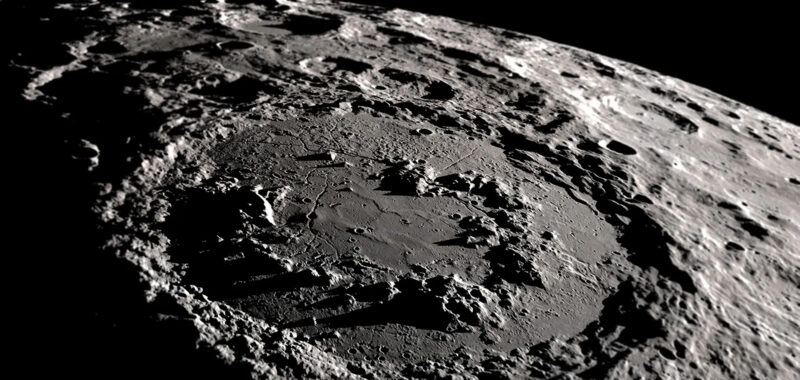
Around 4.5 billion years ago, a Mars-sized protoplanet referred to as Theia had a very bad day. Its orbit set it on a collision course with another, larger protoplanet, and the two came together with such force that Theia was essentially obliterated. In fairness, the other protoplanet didn’t fare much better: the force of the impact blasted a huge amount of its volume into space. Some of this material came raining back down to the surface, while the rest mixed with the remains of Theia, eventually coalescing into a single satellite: our moon.
This scenario represents our best understanding of how the moon formed. A new paper published August 21 in Nature provides new evidence to support this theory, but also raises questions about the fine details of the models we’ve constructed to simulate the collision. The paper is based on data collected by the Chandrayaan-3 mission, whose Pragyan rover collected the first samples of regolith from a high-latitude region of the moon.
As Santosh Vadawale, the lead author on the paper, explains to Popular Science, one key aspect of the theory is the “lunar magma ocean hypothesis.” The energy released by the cataclysmic impact “would [have] melted the outer few hundred kilometers of the moon.” This would have meant the newly formed moon was covered entirely in magma: a global magma ocean, so hot and deep that it took at least tens of millions of years to cool and solidify into rock.
If the moon’s surface was liquid for millions of years, we’d expect relatively light minerals to have floated to the surface, with heavier ones sinking to the bottom. (Think of how a mixture of oil and water will eventually separate, with the oil floating to sit on top of the water.) Vadawale says that in geological terms, we’d expect the moon’s surface to be composed largely of minerals called anorthosites: “A key prediction of the lunar magma ocean hypothesis is the presence of a largely anorthositic crust.”
This prediction was first put to the test by the Apollo missions, whose samples found that the moon’s surface was indeed largely anorthositic. Since then, several other missions have taken samples from equatorial and mid-latitude regions, but until Chandrayaan-3’s arrival, regions closer to the poles had remained unexplored.
“The high latitude regions … have undergone higher impact cratering due to their older age,” explains Vadawale. “This makes it challenging to identify safe landing zones of sufficient size, which probably was why most [early] landings took place in relatively safe Mare regions. However, the importance of landing closer to the poles has been known for quite a while, and … the number of attempts for landing at high latitudes has been increasing.”
Chandrayaan-3, Vadawale says, represents the first fully successful landing in such a region. Its success allowed for the deployment of a rover vehicle that took samples of nearby soil, allowing researchers to examine its composition and compare it to that of lower-lying areas. Vadawale says that the terrain’s composition was largely as expected: “The regolith in this region is predominantly … similar to equatorial highland regions. This provides further support for the lunar magma ocean hypothesis.”
One surprise, however, was the presence of a relatively large amount of olivine, a relatively heavy magnesium-based mineral. Vadawale explains that finding this mineral isn’t remarkable in and of itself: “While the very early models of LMO suggested a crust made of pure anorthosite, further evolution of the model suggests the crust to… [contain] some amounts of magnesium- and iron-bearing minerals [like] olivine and pyroxene.” Such heavy minerals could also be ejected from beneath the surface by large meteor impacts—and Chandrayaan-3’s landing site is close to the South Pole Aitken basin, an immense basin that is the moon’s largest, oldest, and deepest impact crater.
So it’s not the presence of olivine that was unexpected—it was the amount of olivine present that came as a surprise, and specifically the proportion of olivine to another heavy magnesium-based mineral called pyroxene. Other samples have contained more pyroxene than olivine; the samples taken by Pragyan, however, had more olivine than pyroxene. As the paper notes, “This a new finding and is at odds with other lunar highland soils (from the repository of returned samples and lunar meteorites).”
Why? Nobody knows—yet. But it’s possibly very significant, as it has the potential to further refine models of exactly how the moon formed. “The explanation of slightly higher olivine than pyroxene,” Vadawale says, “is a highly significant finding, as it has the potential to constrain different LMO models.” However, he cautions against jumping to any conclusions: “More specific details can only be arrived at based on further modeling.”

